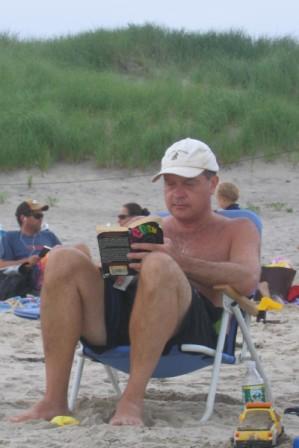The Red Priest's Most Famous Piece
Antonio Lucio Vivaldi was born in 1678 in Venice, to a poor family, and was one of the most interesting and innovative composers of the baroque period. His father was a barber who later became a professional violinist. He learned to play the violin from his father, and would become famous in his own time as a virtuoso violinist. Because his family could not afford a secular education for him, Vivaldi entered seminary and was ordained in 1703 and nicknamed Il Prete Rosso, the red priest due to his red hair. While he assumed the duties of a priest, his heart was really in his music, and he would frequently interrupt saying mass to jot down a melody running through his head before he forgot it. Needless to say, this did not endear him to parishioners or the Church hierarchy, and he withdrew from the priesthood in 1706.
He went on to find a job teaching music and violin at an orphanage for girls born to members of the upper class who fathered children with their mistresses that they couldn't publicly acknowledge but still wanted to support. Many of the hundreds of compositions that survive of Vivaldi were originally written as "etudes" or student exercise pieces.
His work now is considered highly innovative for the baroque period, giving new brightness and energy to the concerto by his use of harmonic contrasts. In addition to his student pieces, he wrote a great deal of sacred music for the Church, and music for the general public.
All of this is an introduction to a new performance of his most famous piece, Le Quattro Stagioni (the Four Seasons), available for free streaming and low cost download from the folks at magnatune.com:
http://magnatune.com/artists/albums/abaroque-seasons/
The performance is by the American Baroque chamber music group, and it is a fine, subtle and nuanced performance. See:
http://magnatune.com/artists/american_baroque
The piece is an example of a "tone poem" in that it uses music to describe something. Vivaldi actually wrote four sonnets to be read with the piece, available in the original Italian and English here:
http://en.wikipedia.org/wiki/The_Four_Seasons_(Vivaldi)
Spring is bright and lively, conveying the earth awakening. Summer starts out placid, then ends with a thunderstorm. Fall is bright and elegant, reflecting the harvest. Winter is dark, moody and brooding. It's a remarkable piece, and a great example of music as art.
So stream, listen, and enjoy.
He went on to find a job teaching music and violin at an orphanage for girls born to members of the upper class who fathered children with their mistresses that they couldn't publicly acknowledge but still wanted to support. Many of the hundreds of compositions that survive of Vivaldi were originally written as "etudes" or student exercise pieces.
His work now is considered highly innovative for the baroque period, giving new brightness and energy to the concerto by his use of harmonic contrasts. In addition to his student pieces, he wrote a great deal of sacred music for the Church, and music for the general public.
All of this is an introduction to a new performance of his most famous piece, Le Quattro Stagioni (the Four Seasons), available for free streaming and low cost download from the folks at magnatune.com:
http://magnatune.com/artists/albums/abaroque-seasons/
The performance is by the American Baroque chamber music group, and it is a fine, subtle and nuanced performance. See:
http://magnatune.com/artists/american_baroque
The piece is an example of a "tone poem" in that it uses music to describe something. Vivaldi actually wrote four sonnets to be read with the piece, available in the original Italian and English here:
http://en.wikipedia.org/wiki/The_Four_Seasons_(Vivaldi)
Spring is bright and lively, conveying the earth awakening. Summer starts out placid, then ends with a thunderstorm. Fall is bright and elegant, reflecting the harvest. Winter is dark, moody and brooding. It's a remarkable piece, and a great example of music as art.
So stream, listen, and enjoy.


0 Comments:
Post a Comment
<< Home